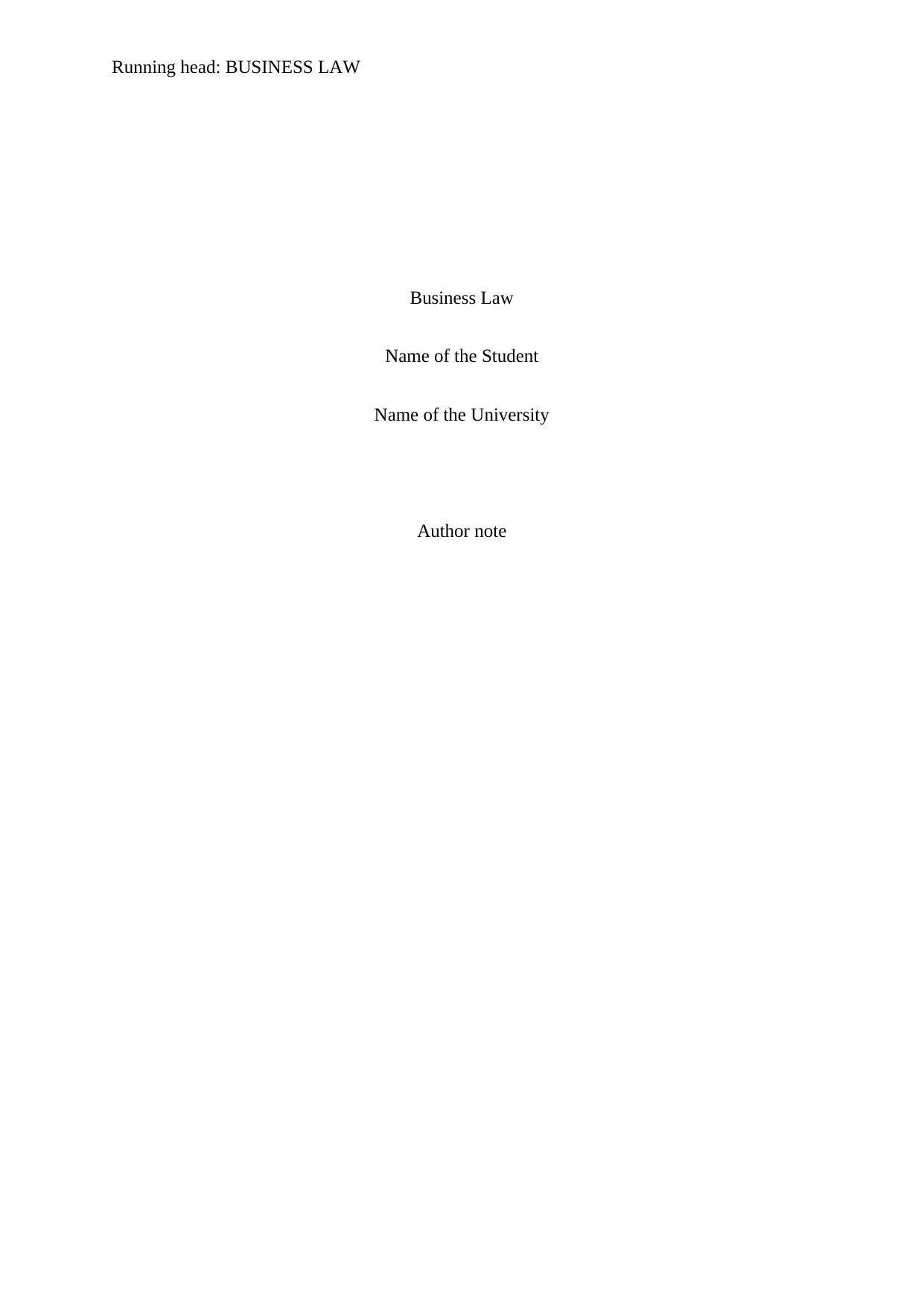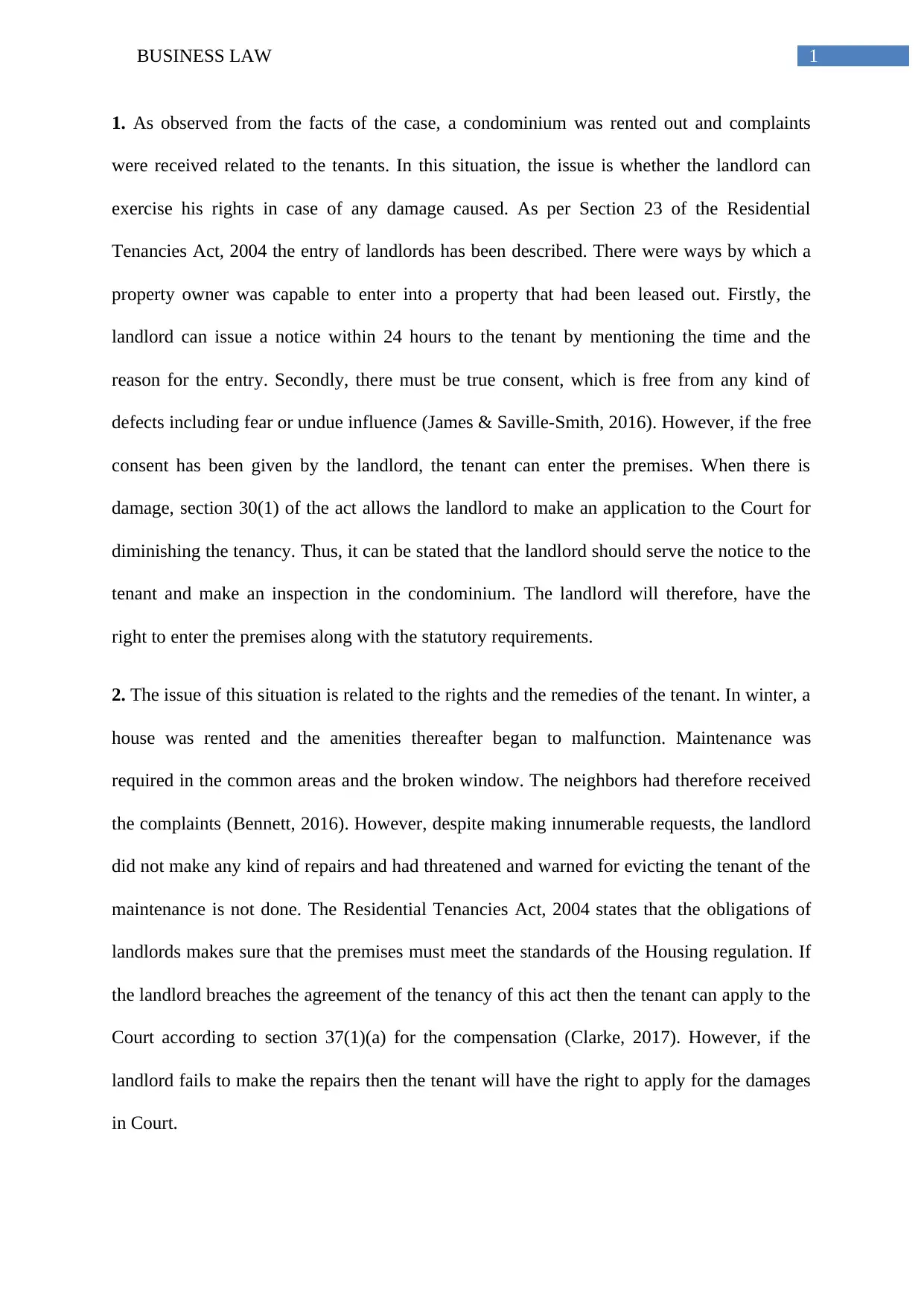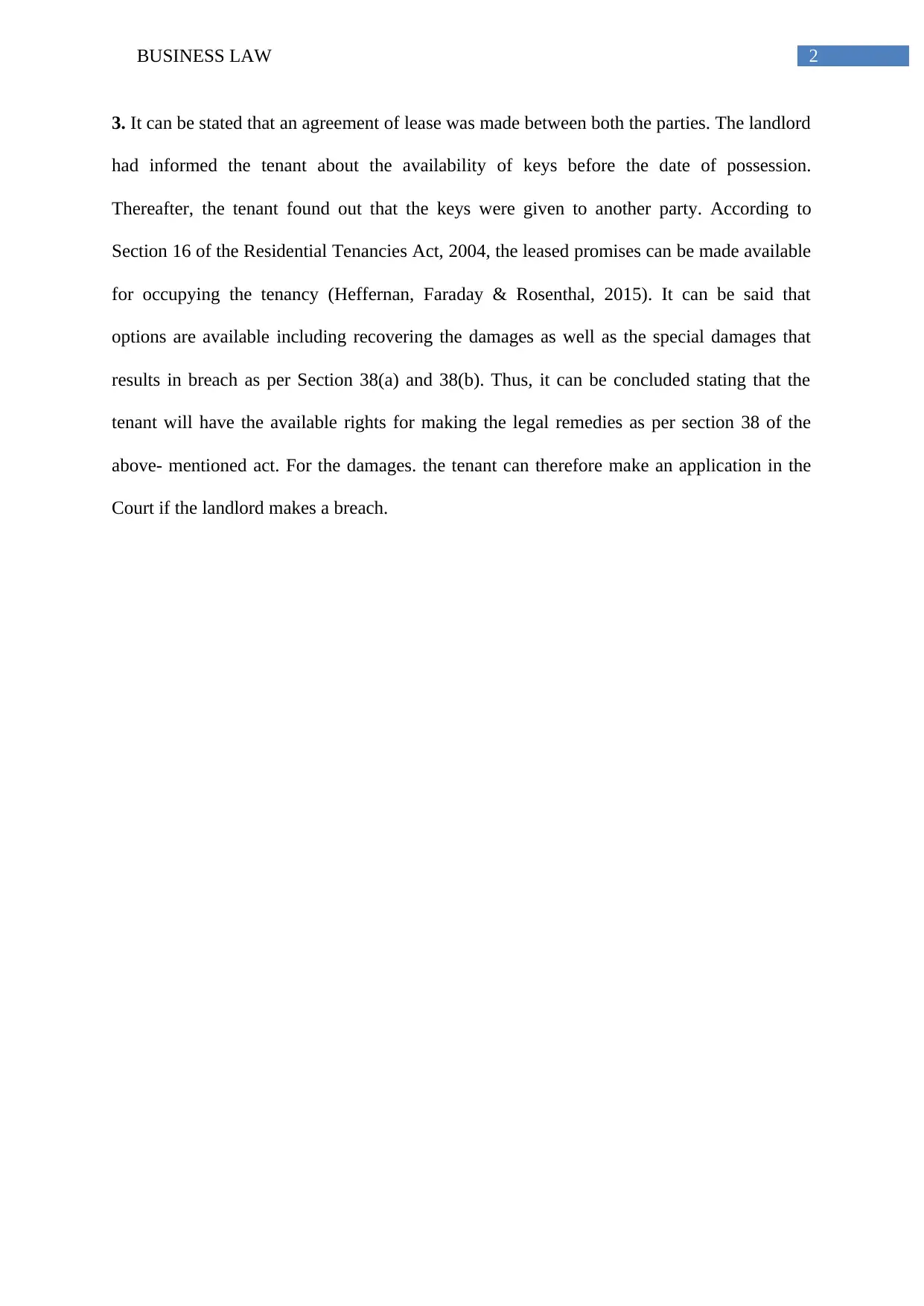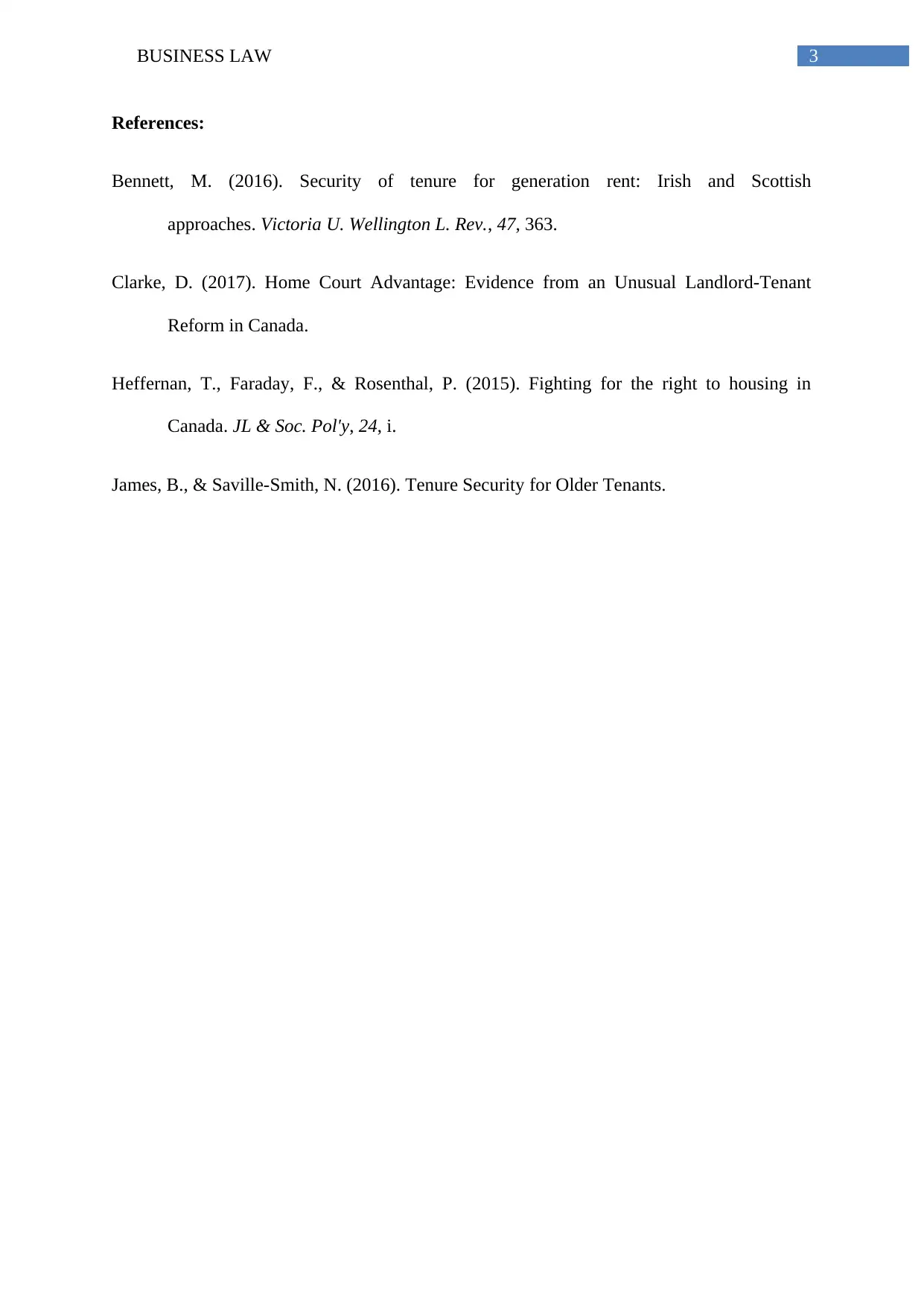MGMT1601 Property Law Assignment: Analyzing Tenant and Landlord Rights
VerifiedAdded on 2023/06/11
|4
|712
|259
AI Summary
This assignment delves into various scenarios involving landlord-tenant disputes, referencing the Residential Tenancies Act, 2004. It examines the landlord's right to enter a rented condominium, the tenant's remedies for unaddressed maintenance issues, and the legal implications of breaching a lease agreement. The analysis covers specific sections of the Act, such as Section 23 regarding landlord entry, Section 30(1) concerning tenancy diminishment due to damage, Section 37(1)(a) on tenant compensation, and Section 16 addressing the availability of leased premises. The assignment concludes that both landlords and tenants have legal rights and remedies available to them under the Act, and tenants can pursue damages in court if the landlord breaches the agreement.
1 out of 4







![[object Object]](/_next/static/media/star-bottom.7253800d.svg)